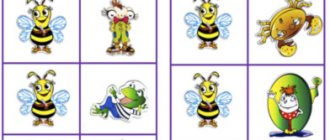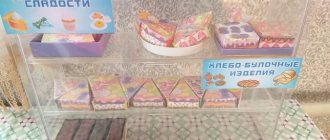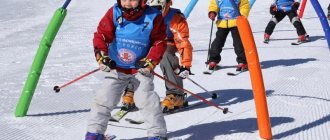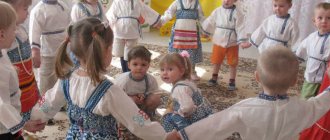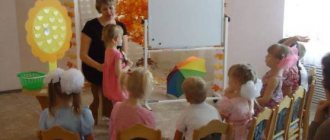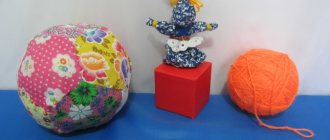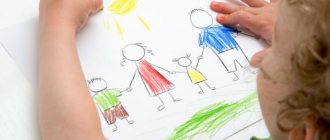Didactic games
Didactic games or in other words, developmental, educational and instructive games. Such games are developed by specialists, teachers, psychologists, speech therapists, for interesting learning of a child in the form of a game. These games are capable of solving certain learning problems. At the same time, the child will be curious, funny and entertaining, since he is not studying, but playing. Learn by playing!
| LOTO develops memory, attention, observation, children's horizons, vocabulary. CHOOSE | Games WITH CLOTHESPENS develop fine motor skills, which means speech, thinking, memory, logic, etc. SELECT |
| The didactic game “PICK A PATCH” develops attention, thinking, color perception, logic and much more . | FINGER GAMES improve fine motor skills, manual dexterity, motor coordination, logic and others. CHOOSE |
| The didactic game "DOBBLE" improves reaction, attention and concentration. GO | DRAWING WITH TWO HANDS simultaneously increases the level of attention distribution, perseverance and concentration SELECT |
| Fixiki PUZZLES : ABC, Counting, Dictionary, Numbers SELECT | PEPPA PIG : Puzzles, Cutting, Counting and Gluing. Develops attention, thinking, visual memory SELECT |
| PAW PATROL PUZZLES and GAMES WITH CLOTHESPENS develops thinking, attention and counting SELECT | PUZZLES LETTERS additional material for teaching reading according to the method of Zhukova N.S. GO |
| PUZZLES for the SMALLEST children develop thinking, imagination, fine motor skills of the fingers SELECT | BUSYBOARD develops perseverance, imagination, motor skills, cause-and-effect relationships GO |
| The didactic game “TRY REPEAT” develops spatial awareness, improves reaction, and improves mood GO |
|
| CUISENER'S WANDS forms the concept of counting, measurement, more, less, up, down, equal, fine motor skills GO | Didactic educational game KOOS CUBES is an excellent brain exercise for expanding mental abilities GO |
| CARDS NUMBERS LACES and CLOTHESPENS develops sensory perception, introduces numbers from 1 to 10 GO | LACES this game will help you learn how to tie your shoelaces and impart dexterity and precise coordination to your hands. |
| CONSTRUCTION WITH LEGO develops motor functions, mental activity, resourcefulness, stubbornness and others. GO | The didactic game “LET'S PLAY SCHOOL” prepares you for everyday school life without the help of tutors GO |
See also:
| DEVELOPING ATTENTION | WE MEMORIZE MNEMOTECHNIQUES 2 TIMES FASTER AND FOR A LONGER TIME | HOW TO INCREASE A LOVE OF READING |
Requirements for cards for preschool children
- a realistic, clearly recognizable image (or a large photograph of an object), in which all the details are clearly visible,
- an image angle that is understandable to the child,
- thick cardboard, bright, clear picture printing,
- absence of unnecessary distracting details in the picture.
There are many card manufacturers, but in terms of quality (this is my subjective opinion, of course), I really like the “Little Genius” cards because:
1) they are made on excellent quality cardboard and will last a long time,
2) this series of cards has excellent image quality.
At the end of this article I showed examples of them on various topics.
Also very good quality cards called “Smart Cards”.
As handouts for a group of children, mini-cards on various topics are convenient, which are published by the Sfera publishing house and are called “handout cards.”
Examples of flashcard sets for downloading are given at the end of this article.
Section 5. Games with cards for children: development of attention, perception, memory
Game with cards "Chest"
You will need for the game: an opaque box with a lid or a chest (for example, a beautiful cardboard chest from a New Year's candy set).
How to play: show your child 6-10 cards from one thematic set. For example, bird cards. Examine and manure each bird, discuss how they differ from each other and how they are similar. Try to remember what is written on the cards.
Then the child closes his eyes, and you hide three cards in the chest. The child opens his eyes and guesses what kind of cards are in the chest.
In the next game we are changing some of the cards for the game - adding new ones.
If the child guesses easily, then you can hide five cards in the chest.
Game with cards “One, two, three - look carefully”
You will need several paired sets of cards to play. It is necessary that they contain the same objects, but depicted differently. For example, the first set of cards is a photo of pets. The paired second set of cards are drawn images of pets.
How to play. The adult quickly shows a card from his set and says very quickly: “One - two - three - look carefully!” He immediately removes the card. Children need to quickly find a similar picture on the table among the cards laid out in a paired set and name it. The winner is the one who finds it faster among all the pictures laid out on the table.
Game with cards "Concepts"
You will need different themed sets of cards. Place four object pictures in front of your child. Three of them are a homogeneous group and refer to the same concept. The fourth one is redundant. The child needs to find an extra card and remove it, and also explain how to name the remaining pictures in one word and why they can be combined into one group (transport, trees, bushes, migratory birds and other concepts).
Task examples:
- Apple, pear, plum, plate.
— Cup, spoon, fork, glasses.
— Rose, cornflower, chamomile, birch.
Card game "Card Classification"
Place cards from 3-6 sets in front of the child, mixing them with each other.
The task is to look at all the pictures and sort them into groups. Name each group with a word (these are professions, these are vegetables, these are poultry, these are animals of Africa, etc.). After the child combines all the cards into groups, you need to ask him to explain why he put all these pictures in one group and what they have in common.
You can include provocative pictures in the set of pictures for the game - which cannot be classified into any group or combined with other pictures.
Game with cards “What has changed”
Place a row of cards in front of your child. Name them and look at them with your baby. Then let the baby turn away, and you make changes to this row, for example, you can add a picture, or vice versa, remove the picture, swap the pictures in places. When everything is ready, the baby opens his eyes and tries to guess what has changed. Then the adult and child change roles.
Game with cards “Guess the parts”
Place a series of cards in front of your child, for example, cards on the theme “Nomadic Birds”. Look carefully at all the birds - how they are similar, how they differ, how you can recognize them, why they are called “nomadic”. Then the baby turns away, and the adult at this time takes one card and covers it with a thick white sheet of cardboard so that only part of the image is visible. The kid needs to guess what kind of card it is. The remaining cards are closed and not visible.
If it is difficult for a child to guess, then you can slightly open the image so that part of the body, beak, wing or other striking feature of this bird is visible.
The game can be played with any thematic set of cards.
Game with cards for memory development “Help Dunno”
Place 6-7 pairs of pictures related in meaning in front of the child. For example, a fisherman - nets, soap - a washcloth, a hare - a carrot, Santa Claus - a snowflake, and so on. The pictures need to be mixed.
Tell your child that Dunno at school was asked to memorize these items, but he cannot and does not know how to complete this task. The child needs to arrange all the cards in pairs according to their meaning and remember the pairs. Then we cover the cards with a sheet of thick paper or a thick scarf, and the baby tries to name the pairs that he remembers. If he names a pair, then he gets it. We count how many pictures he managed to win from us in this game.
If a child easily remembers 6 pairs of objects, then you can increase the number of pictures in the game.
Game with cards “Invisible hat”
You will need a thick sheet of paper with an invisible hat drawn on it. We put the cards on the table, cover them with a sheet of paper - our “invisible hat”. We lift the sheet with the invisible cap and count to three while showing the cards to the child. Then the invisible cap goes down and the pictures become invisible. The child needs to memorize the cards in three seconds. When the invisible hat covers the cards again, the baby names them.
Game "Restore Order"
You will need 10 cards, place them randomly on the table or floor. Invite your child to remember their location (in 15 - 20 seconds). Then the baby turns away, and the adult swaps the pictures. The child needs to arrange the pictures, restoring order.
